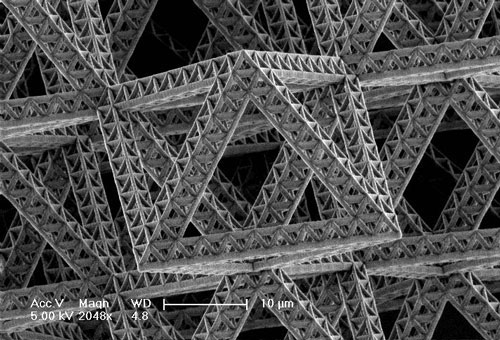Design-at-home viruses?
When the spread of cheap micro-computers made computing accessible to a wide range of people, there was an outpouring of creativity - no longer did one have to belong to one of the 'priesthoods' that cared for the big and expensive lumps of computing power. For example, the era of a new form of mass entertainment - the computer game - arrived, powered (at least initially) by creative individuals. However creativity is notoriously unbounded, and it also ushered in the era of computer viruses.
Now there are signs that 3D printing, nanotechnology and biotechnology are converging (see, for example, Nature, Forbes, and nanowerk articles). We can already construct intricate micro structures at the scale of viruses, for example see the 'fractal nanotruss':

Similarly, we have already reconstructed the "Spanish Flu" virus from DNA extracted from degraded samples taken from the grave of some of those who died in the 1918 pandemic.

3D printing is being trialed for 'printing' functional liver tissues.
We are not at the stage where home 3D printing, nanotechnology and genetic biotechnology have converged, so that someone at home could download or hack the specification of a virus and make it, but one can forsee day when this is possible. So far, computer viruses have caused a lot of annoyance and personal loss of data, but have not been catastophic. It is interesting to speculate what will happen when bio-hacking is an activity accessible to many.


